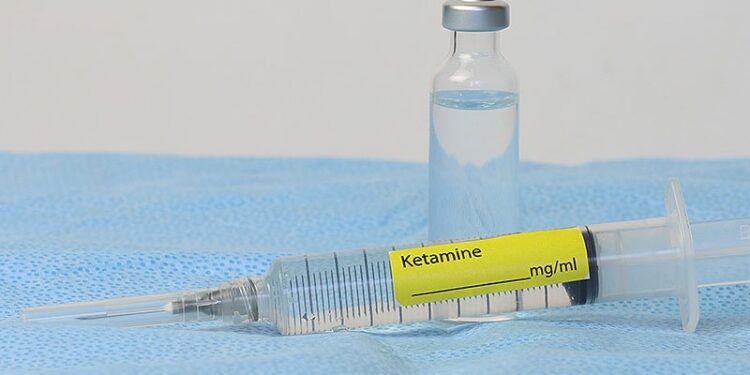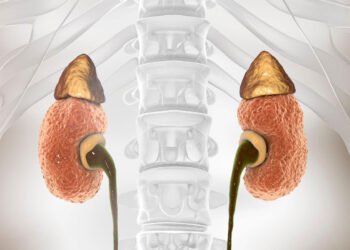Data from the TRAILBLAZER-ALZ 2 long-term extension (LTE) study demonstrated that donanemab (Kisunla, Eli Lilly and Company) continues to deliver meaningful benefits that increase over 3 years, especially when started early, with a manageable safety profile.
“There was a 27% reduced risk of progression if you were started initially in the trial versus delayed in the trial,” reported study investigator Mark Mintun, MD, group vice president of Neuroscience Research & Development at Eli Lilly and Company.
The core TRAILBLAZER-ALZ 2 study results were presented 2 years ago at the Alzheimer’s Association International Conference (AAIC) and simultaneously published in JAMA.
The most recent results were presented on July 30 at the AAIC 2025.
Ongoing Disease-Modifying Effects
Participants in the core study who completed the 76-week placebo-controlled period were eligible to continue in the LTE period, lasting an additional 78 weeks.
The LTE study included 550 “early-start” participants who initiated donanemab in the core study and either continued it or were switched to placebo after meeting predefined amyloid clearance thresholds. These participants were followed in the LTE period to assess the long-term safety and durability of treatment effects.
The LTE study also included 657 “delayed-start” participants who received placebo in the core study and switched to donanemab at the start of the LTE period in a blinded manner to evaluate delayed treatment outcomes.
Compared with a matched, untreated external cohort from the Alzheimer’s Disease Neuroimaging Initiative, patients initially treated with donanemab in the core study had a reduction in cognitive decline at 18 months of 0.6 points on the Clinical Dementia Rating-Sum of Boxes (CDR-SB) — and this benefit grew to 1.2 points at 36 months.
“What we saw was that the benefits continued to grow and ended up essentially doubling with a benefit of 1.2 CDR sum of boxes versus the control arm at the end of the 3-year trial,” Mintun told conference attendees.
Nearly half of patients in the delayed donanemab start group had progressed to moderate Alzheimer’s disease (AD) by the time they started treatment in the LTE period. Despite this, they still achieved a 0.8 CDR-SB benefit after 3 years.
Compared with delayed start, early start reduced the risk for progression on the CDR global scale by 27%, Mintun noted.
Amyloid clearance was consistent across groups. More than three quarters of patients treated with donanemab reached amyloid clearance within 76 weeks of starting treatment. Long-term follow-up showed slow reaccumulation of amyloid of about 2.5 CL/y.
No new safety signals were observed in the LTE period. Safety outcomes were similar across the early- and delayed-start groups. Amyloid-related imaging abnormalities (ARIA) and infusion-related events occurred at comparable rates whether treatment was started early or delayed.
Encouraging Confirmation
Reached for comment, Eric Reiman, MD, executive director at the Banner Alzheimer’s Institute, Phoenix, said it’s “encouraging to see confirmation of the view that many in the field have is that these treatments will continue to show a greater benefit when followed over longer periods of time, and that starting earlier is likely to be better, as we would have expected.”
The observed pattern of continued benefit over time “supports the concept of a disease-modifying treatment, rather than purely a symptomatic treatment,” Reiman told Medscape Medical News.
Also providing perspective, Rebecca M. Edelmayer, PhD, Alzheimer’s Association vice president of Scientific Engagement, said a key message is to “diagnose and treat Alzheimer’s disease early to get the most benefit.”
“Patients in the study who were treated in earlier stages of disease progression exhibited greater and increasing benefits compared to those with delayed treatment or no treatment.
Patients at earlier disease stages and younger patients experienced more pronounced benefits,” said Edelmayer.
She also noted that stopping donanemab once the patient achieves amyloid clearance is a “feasible treatment strategy [and] may reduce patient and healthcare provider/system burden. Close monitoring and ongoing surveillance remain essential, including MRI monitoring for ARIA, especially in APOE-ε4 carriers. New titration guidelines and FDA guidance designed to reduce ARIA risk improve the safety profile of the treatment,” Edelmayer said.
Edelmayer also emphasized the importance of collecting real-world data outside of what can typically be learned through clinical trials.
“The Alzheimer’s Network for Treatment and Diagnostics (ALZ-NET) collects real-world data from patients receiving care across a variety of clinical settings who are being evaluated for or treated with new, approved Alzheimer’s treatments. The evidence gathered will be used to advance research, improve health equity and patient care, and inform Alzheimer’s and other dementia treatment practices,” Edelmayer said.
“The data gathered can be used by professional and nonprofessional care providers, diagnostic companies, EHR companies, private and public funders, researchers, life sciences companies, payors, public health, and government and regulatory policymakers to improve care,” she added.
ALZ-NET is now enrolling clinical sites across the country.
The TRAILBLAZER-ALZ 2 study was funded by Eli Lilly and Company. Mintun is an employee of the company. The Banner Institute is a trial site for the TRAILBLAZER-ALZ 2 study and the TRAILBLAZER-ALZ 3 study, which is assessing donanemab’s potential in preventing AD in individuals at risk. Edelmayer reported having no relevant disclosures.
Source link : https://www.medscape.com/viewarticle/alzheimers-med-donanemab-continues-deliver-benefit-3-years-2025a1000m43?src=rss
Author :
Publish date : 2025-08-21 11:20:00
Copyright for syndicated content belongs to the linked Source.











